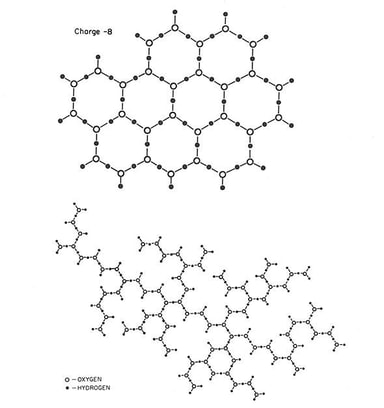Activity 1 - The presentation of scientific findings and issues
Subtopic A.6 - Nanotechnology
NOS statement 5.6 - As experts in their particular fields, scientists are well placed to explain to the public their issues and findings.
|
|
Time: 1 h
Task: Watch this introduction video to nanotechnology and use your own research to create a public information poster explaining:
References are also important. |
Activity 2 - The discovery of polywater
Subtopic A.1 - Materials science introduction
NOS statement 3.5 - It is also very important for scientists to be aware of the cognitive biases that may impact experimental design and interpretation.
|
Time: 15 min.
Task: In 1961, a soviet physicist, who had been repeatedly forcing water through very thin quartz tubes, discovered small quantities of a type of water with significantly different properties to normal water. One of the suggested structures for this polywater is shown to the right. Given that only some of his experiments produced polywater:
References:
Stromberg, J. (2013). Slate’s Use of Your Data. Retrieved from https://slate.com/technology/2013/11/polywater-history-and-science-mistakes-the-u-s-and-ussr-raced-to-create-a-new-form-of-water.html |
